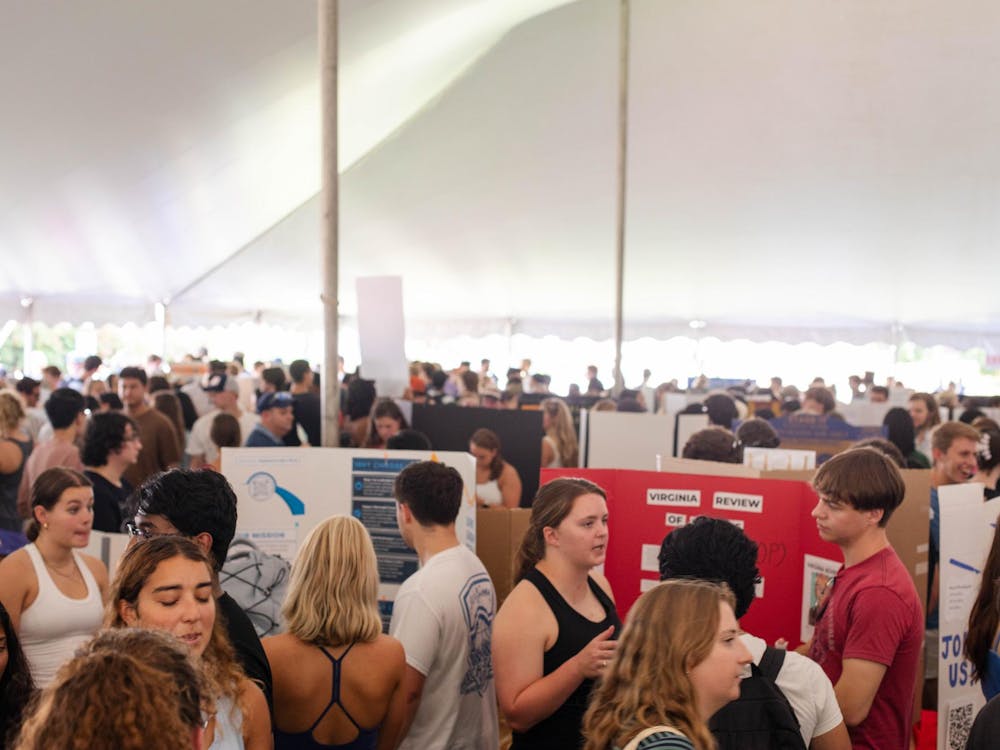THE UNIVERSITY welcomes racial minorities with open arms. There's a student organization on Grounds for nearly every underrepresented race: The Black Student Alliance, La Sociedad Latina, the Asian Student Union and a wealth of other student organizations are dependant on race as a uniting factor. Many see these groups as proof of our diversity and racial acceptance. In reality, the opposite is true. Racially-oriented student organizations promote segregation on Grounds.
An important purpose of race-based student groups is to create a sense of unity among members of a particular race. For example, the BSA strives "to establish a more perfect union between various components of the African-American community" (BSA Constitution). Organizations like the BSA or the ASU encourage students to bond over a shared racial identity. They allow their corresponding members to create smaller communities. Minority students can join with members of the same race. This unity is detrimental to the community as a whole as well as to these minority groups.
While participation in organizations based on race brings minority students closer to members of the same race, it moves them farther from everyone else. These groups isolate minorities from the University community, effectively creating segregation on Grounds. When this unity is accomplished among races, the result is factionalism for the greater University community. Race-based student organizations directly polarize the student population. Members of these groups see themselves in terms of color. The BSA, for example, through its principles of furthering "Black unity, the Black community, and Black pride," encourages members to not consider themselves as University students alone, but black University students. We do not have a community of students; we have a collection of separate societies that happen to spatially coexist. The existence of racially-oriented student groups personifies this problem.
Ryan McCarthy, president of the Asian Student Union, admits that "segregation is often the result of fear and the natural gravitation toward comfort zones based on similarities." But he contends that "too often minority students are pressured to leave their comfort zones and assimilate with the majority." He agrees that minorities need to make an effort to do this but asks that majority students try to integrate themselves more, as well.
Some would agree with him on this. Many student organizations are mostly or entirely white. However, they all are grounded in something other than race. For example, the honor support officer positions may be dominated by white people, but they chose to participate because they were interested in the honor system. Undoubtedly, some white members of honor felt more comfortable joining an organization where they would be in the majority. The opposite reason may have deterred at least one minority student. But in these organizations common race is incidental, rather than a primary basis.
Members of the IFC and ISC are almost completely white and are not as obviously united by an activity or interest. But students still choose membership based on social congruence, an ability to get along. Being white does not ensure a student's acceptance by a fraternity.
There may be many members of the BSA or ASU who have comparable interests, but their common race does not guarantee this fact. Racism is defined as the assumption that "distinctive human characteristics and abilities are determined by race," (Oxford English Dictionary). Race-based groups not only acknowledge a distinction between races, they glorify racial differences. The mere existence of a group entitled "The Black Student Association" validates the proposal of there being commonalities between all black students. Race-based groups imply that characteristics exist among students of the same race that justify their amalgamation. Racial discrimination stems from this same kind of racial stereotyping.
Members of the same race often have similar backgrounds, nationalities or socioeconomic classes which can lead to mutual concerns or interests. But common race doesn't guarantee these. The chance isn't worth the segregation these groups cause.
What can the University administration do to remedy this problem? Frankly, not much. If they prohibit the existence of racially oriented organizations, then they will be declared racist and be infringing on various civil liberties of minority students. Legally, the University's hands are tied. The student body, then, has the responsibility to make its own choice.
Students never will integrate the University completely unless we first get rid of student groups based on some abstract notion of race as capable of being the primary factor of drawing people together. If student concerns are your passion and you want to help make change, join a group that isn't based on race to let your voice be heard. Then it will be heard by the entire University community, and it will be the voice of an individual, not a color.
(Kimberly Liu is a Cavalier Daily viewpoint writer.)




